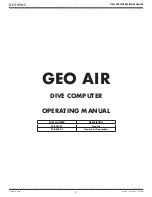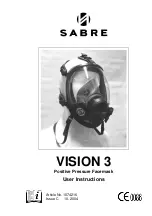6 - 16
Transpector MPS Operating Manual
6.6.1.2 Selecting Tune Masses
The most important portion of mass scale tuning is determining which masses are
to be tuned.
There are three different methods of tuning:
To tune using a user-supplied test mixture, continue to
Selecting Masses for Tuning with a User-Supplied Test Mix, on page 6-16
To tune using process gases, continue to
section 6.6.1.2.2, Selecting Masses
for Tuning with Process Gases, on page 6-16
To tune with background gases, continue to
section 6.6.1.2.3, Tuning with
Background Gases, on page 6-17
.
6.6.1.2.1 Selecting Masses for Tuning with a User-Supplied Test Mix
In some applications, it can be useful to have a test mix manufactured by a gas
supplier. The ideal mix would include the factory tune masses for the mass range
of Transpector MPS to be tuned. The factory tune masses can be found in
.
6.6.1.2.2 Selecting Masses for Tuning with Process Gases
In general, Transpector MPS tuning requires access to a low mass, a mid mass
and a high mass.
Do not tune mass 1 or 2 if Hydrogen is not present in the process, but
do not delete
them from the tune table
.
Preferably, mass 4 should be tuned especially if Transpector MPS is used for leak
checking. One way of doing this would be to create a leak and spray in helium. This
will satisfy the low mass.
For a mid mass, try to use Nitrogen or another mass in that area (water,
oxygen, etc.)
Tuning higher masses can be more difficult.
If the process does not contain gases with masses over 40 AMU, tune with
argon
If the process does contain gases with higher masses:
Tune one between the mid mass and 100 AMU for 100 AMU sensors
Tune one mass between 100 and 200 AMU for 200 AMU sensors


















